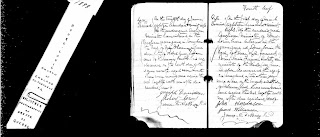 Christmas has been marked in Ireland since St Patrick brought Christianity to the island in the fifth century. Over the centuries pagan Celtic customs merged with Christianity to produce some uniquely Celtic Christmas traditions for the winter festival. While not all are practiced today, some can still be seen – customs which date back to earlier, less commercial times.
Christmas has been marked in Ireland since St Patrick brought Christianity to the island in the fifth century. Over the centuries pagan Celtic customs merged with Christianity to produce some uniquely Celtic Christmas traditions for the winter festival. While not all are practiced today, some can still be seen – customs which date back to earlier, less commercial times.
Before the coming of Christianity the people of Ireland practiced a pagan druidic religion which gave them a keen sense of their connection with the natural world. Like many earlier peoples around the world, the winter solstice of 21st December was particularly important to the Gaelic Irish. The winter solstice is the shortest day / longest night of the year. However for the Celts it marked the turning point in the year. In the dark and cold of winter, at solstice the sun begins the long journey back towards its midsummer peak.
The Celts celebrated the turning point of the sun with fires in sacred places such as the Hill of Tara. The use of fire to mark the winter solstice may have contributed to the more recent Irish tradition of placing a candle in the window of your house during the twelve days of the Christmas season. It is the time of year when the Celts, just like people all across the world want to rekindle the light of love and hope in their lives.
A candle in the window: As well as a throw-back to the ancient Celtic custom of using fire to celebrate the turning point of the year, this tradition is said to be aimed at welcoming travellers to your home. The candle in the window marks the way to warmth and hospitality to anyone who finds themselves, like Mary and Joseph in the New Testament, without a place to stay at Christmas time.
Greenery: The druids of the ancient Celtic world used evergreen to branches to symbolize the eternal nature of the human soul. In Christian times the tradition of bringing evergreen branches into an Irish home has continued, as a symbol of the eternal life brought about by Christ’s resurrection. In Celtic countries evergreen branches such as holly and yew are more traditional than the German custom of bringing an entire tree into the home.
In Irish (Gaelic) Nollaig Shona Duit means Happy Christmas to you. It is pronounced no-leg show-na ditch.
A traditional Irish Christmas blessing in English is: 'May peace and plenty be the first to lift the latch on your door, and happiness be guided to your home by the candle of Christmas.'
At new years it is traditional in Ireland to say 'Go mbeire muid beo ar an am seo arís.'In English - May we be alive at this time next year...
©2016 Linda Sullivan-Simpson
The Past Whispers
All Rights Reserved


